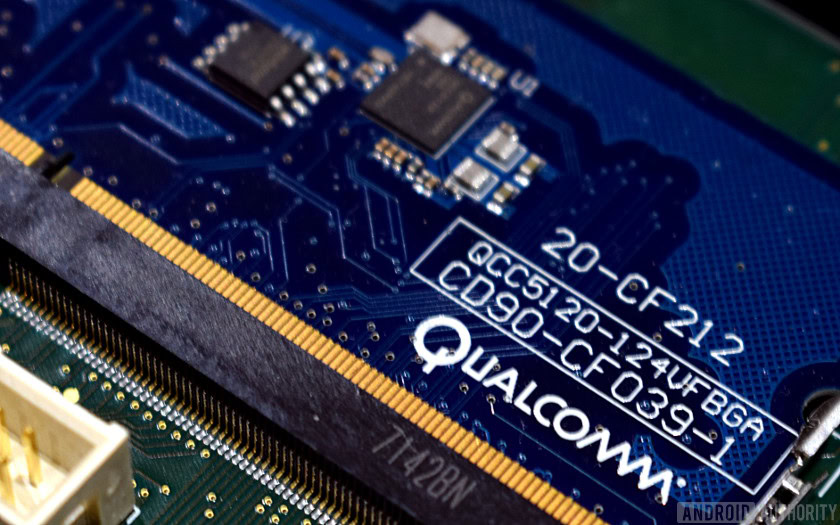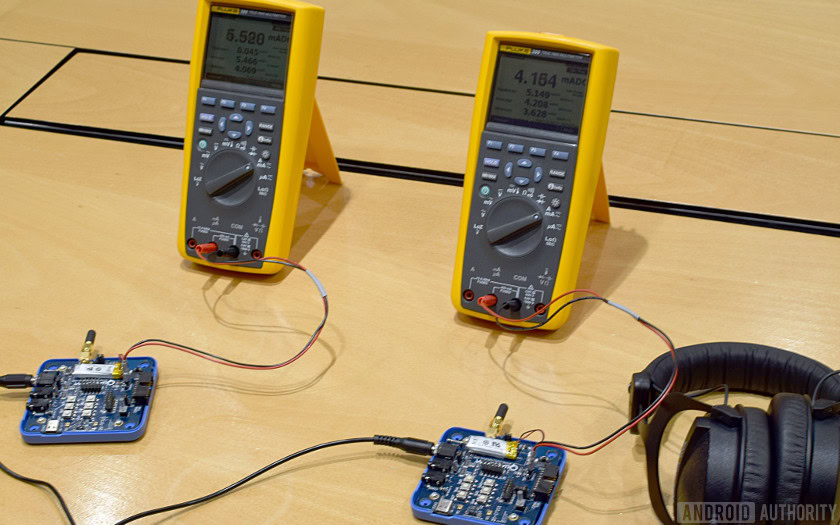Affiliate links on Android Authority may earn us a commission. Learn more.
Qualcomm wants to triple Bluetooth headphone listening time

Two major issues always come up in any discussion of Bluetooth headphones — sound quality and battery life. Today, Qualcomm is aiming to solve these problems with its newly unveiled QCC5100 series of low-power audio SoCs.
The QCC5100 is a fully integrated Bluetooth audio solution, packing in a Bluetooth radio, Class-D headphone driver, a 192 kHZ / 24-bit codec, hybrid Active Noise Cancellation (ANC), sensor processing, and aptX HD technology, into a single chip. The new design boosts power efficiency, processing capabilities, and supports new use cases.
Qualcomm states the QCC5100 series can help reduce power consumption by up to 65 percent over previous chips, and estimates playback time could triple when compared with today’s Bluetooth devices. In fact, the power consumption can get so low that OEMs introducing even a few LEDs to their designs could double the power consumption. Qualcomm demonstrated the QCC5100 playing back audio over aptX and consuming a little over just 5 mA of current. This is an extreme use case, but just goes to show the capabilities of Qualcomm’s integrated solution.
The new Bluetooth chip is also compatible with Qualcomm’s TrueWireless technology. This allows stereo earbuds to be connected together completely wirelessly, with your phone or music player simply connecting to the master earbud. There’s an interesting new optional software feature available which automatically selects the earbud with the largest remaining battery capacity to act as the master, thereby ensuring the longest possible battery life too.

On top of the battery life improvements, Qualcomm has doubled up on the processing capabilities of its new chip. There’s now a dual-core 32-bit application processor configuration running at 80 MHz, backed up by a dual-core Qualcomm Kalimba DSP clocked at 120 MHz. Qualcomm’s previous high-end design was a single AP and single DSP design. The chip also comes with embedded ROM and RAM, with support for external flash too.
This big boost to processing power makes this Qualcomm’s most powerful Bluetooth SoC. It’s designed to enable its hardware partners to do much more on device. While one of the APs runs the necessarily Bluetooth code, developers are free to use the second core to handle sensor data or whatever they require. The dual DSP setup also gives developers more power to play with for audio and on-device voice processing.
“This breakthrough single-chip solution is designed to dramatically reduce power consumption and offers enhanced processing capabilities to help our customers build new life-enhancing, feature-rich devices,” said Qualcomm Technologies International senior vice president and general manager of voice & music Anthony Murray in a press release.
Along with longer battery life, Qualcomm's new chip supports virtual assistants, noise cancellation, and true wireless earbuds.
The QCC5100 rounds off its feature set with the company’s Hybrid ANC technology, with both feedforward and feedback capabilities— a sought-after feature to help block out unwanted background noise. The ANC is its own processing unit, so it doesn’t require any DSP time. There’s also low-power wake-word detection for smart assistants, along with the TrueWireless and aptX HD capabilities mentioned earlier.
Designers could use the chip in a number of new use cases. Qualcomm expects these to range from fitness headphones with built-in tracking sensors to hearables complete with voice assistant capabilities. It could be great for higher-end wireless solely-music-focused headphones too.
Qualcomm is planning to showcase a number of reference designs for its partners in the first half of 2018, and states that it already has some customers for its new chip. We’ll have to wait a little longer to find out who.